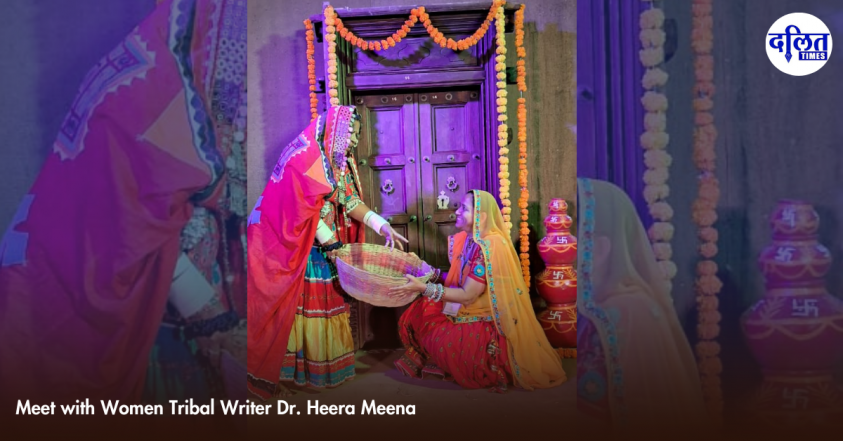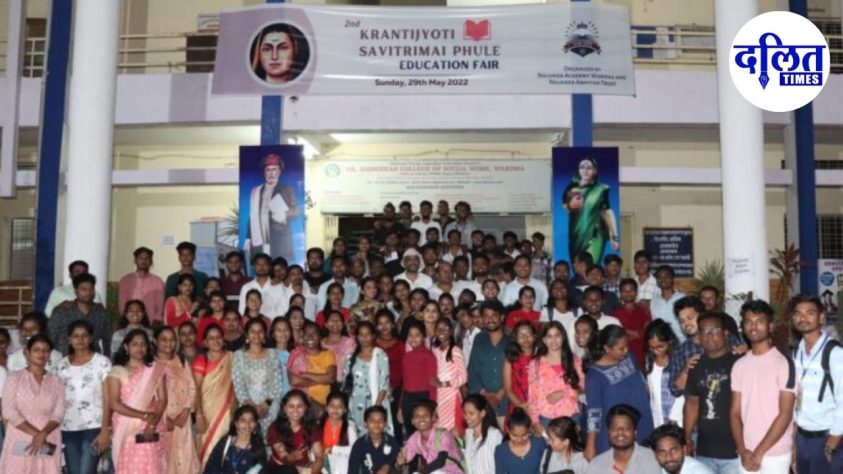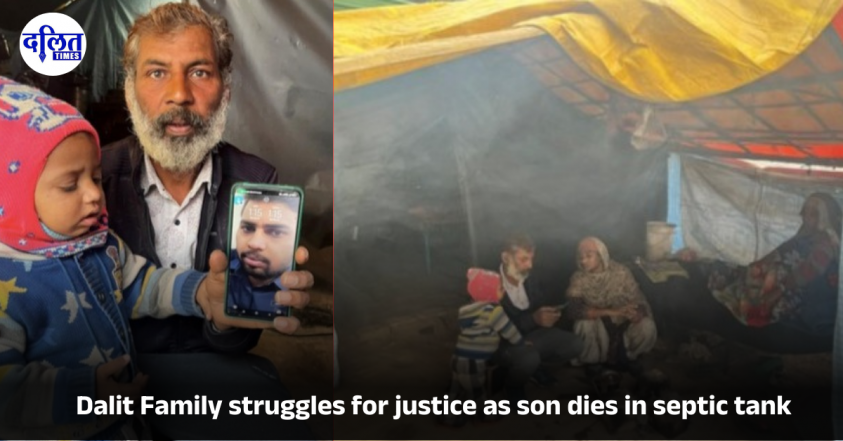Dr.Heera Meena the Auteur and Luminary in her own filed and completed her studies after the marriage with the support of the Partner. Started writing after the marriage . she is an accedemician and writer handling socio economic issues. She never ignore the problems of the tribal and fighting for the rights of tribals . She using the writing as a strong weapon against injustice.
Dr.Heera Meena Born on 30th April 197 at Sodala, Jaipur in Rajasthan in a Mina Tribe Family. Parents are Rookma Mina and Babu Lal Mina. She started her education in Government Senior Secondary Schoo at Solada, in Rajasthan. She finished her secondary education in Kumawat School at sodala in Rajasthan.
Dr.Heera Mina finished her B.A in Maharani College, Jaipur Rajasthan on 1991, M.A Politics in Rajasthan University at Jaipur in 1993, M.A, Hindi Literature, in Rajasthan University at Jaipur on 1999, B.Ed, Hindi Literature in Rajasthan Universit at Jaipur, 2007, Hindi Journalism on 2008 , M.Phil on 2009, NET qualified on 2009, PhD awared on 2016 , successfully worked as Assistant Otofessor(Ad hoc) at delhi University for a period of 4 years and 8 month.
She chaired National and international seminars in many special occasions. So many articles published and tried to reveal the social life of Tibal community especially Mina community in her writing. Her Poems lightening the social and cultural life of the Tribe especially mina community. Her major works are :Womens condition and direction in maitreyi Pushpas Novel, Universal birth place that is collection of tribal poems, Call of the people that is also poems, Ancient traditions of oral literature and song, Meena Wedding songs and village culture.
Dr.Heera Mina following a life that enlightened others and her daughter also educated and married without gave dowry. And she always raise her voice against injustice and fight for justice. Her writing also very power full tool for establishing the rights and documenting the history and way of life of Tribal community. Dr. Heera Mina write her works in Meeni language and focused in the area of culture, tribal identity, ancestral tradition, nature,documentation of oral image literature, collection and preservation of oral literature, contemporary tribal issues along with history. She also a fighter and organized many protest for tribal communities across the country along with other community members. ” Demandig to implement Tribal column in the Census at national level for implementing the identity of all the Tribal communities permanently”- Dr.Heera Mina
Mina community and Socio-cultural Back ground:
three years after the Act had been repealed. Mark Brown has examined the impact and issues of the Meena community during British rule and the change in their status from being a higher social group to a criminal tribe
Section 4 of the riminal Tribal Act deals Occupation of wandering tribe to be stated and also proposed residence and means of livelihood.
– If such tribe, gang or class has no fixed place of residence, the report shall state whether such tribe, gang or class follows any lawful occupation, and whether such occupation is, in the opinion of the Local Government, the real occupation of such tribe, gang or class, or a pretence for the purpose of facilitating the commission of crimes, and shall set forth the grounds on which such opinion is based; and the report shall also specify the place of residence in which such wandering tribe, gang or class is to be settled under the provisions hereinafter contained, and the arrangements which are proposed to be made for enabling it to earn its living therein.

Section 20 of the Act deals Arrest of registered person found beyond prescribed limits.
Any person registered under the provisions of this Act, who is found in any part of British India, beyond the limits so prescribed for his residence, without such pass as may be required by the said rules, or in a place or at a time not permitted by the conditions of his pass, or who escapes from a reformatory settlement, may be arrested without warrant by any police-officer or village-watchman, and taken before a Magistrate, who, on proof of the facts, shall order him to be removed to the district in which he ought to have resided, or to the reformatory settlement from which he has escaped (as the case may be), there to be dealt with according to the rules under this Act for the time being in force. The rules for the time being in force for the transmission of prisoners shall apply to all persons removed under this section: Provided that an order from the Local Government or from the Inspector General of Prisons shall not be necessary, for the removal of such persons.
The tribes traditionally resided in remote forests and mountainous regions, known as Palas. Colonel Tod, while interpreting the term Pal, noted that it referred to the caste of hill tribes and signified a valley used for both agriculture and defense. Historian Hirachand Gauri Shankar Ojha mentioned that huts were constructed on hills, often spaced far apart, and a cluster of such huts was called a Pal (or Palli). Geographically, the Meena tribe is divided into two groups: (a) those inhabiting the southern regions of
Rajasthan, including Udaipur, Dungarpur, Banswara, and Chittorgarh districts, and (b) those residing in the northeastern regions, encompassing Jaipur, Alwar, Sawai Madhopur, and Bharatpur districts.
Socially, the Meena community is segmented into twelve Pals, thirty-two Tads, and fifty-two Gotras (clans). Each Pal is inhabited by members of a single Gotra or bloodline. Presently, several other castes and tribal groups from different regions have also settled in these Pals to varying extents. The Meena Kshatriyas are further divided into thirty-two sects, referred to as Tads, comprising fourteen major and eighteen minor sub-sects. Marriage within the same clan (Gotra) is strictly prohibited in Meena society.
Certain clans are socially avoided, and members of these clans are spread across Rajasthan, Madhya Pradesh, Maharashtra, Gujarat, Punjab, and other states, often adopting different names and surnames. In the Bhopal division, Meena clans include Upara, Nananya, Kankarwa, Dumal, Ghungaria, Singadiya, Dhanawat, Badawat, Diariya, Sastiya, Chauhan, Chulawat, Gunawat, and Tatu. In Hoshangabad (Madhya Pradesh), the Meena tribe is also known as Maina or Pardeshi.
According to Major Pawlett, a British colonial officer, conducted extensive studies on the Meena tribe during British rule in India. He is renowned for classifying the Mina community into two distinct groups: Zamindar Meena and Chowkidar Meena. When the Mina became subjects of the Rajput kings and served as soldiers in their armies, they likely adopted Rajput clan identities.
Zamindar Meena: In the 13th century, after the Meena tribe lost its political dominance, the community became fragmented into various divisions. The Zamindar Meenas, having lost their political authority, turned to agriculture and animal husbandry Following their decline in power, many Meenas turned to agriculture and animal husbandry. A distinct village named Beda Meena (Bara village) was established in the former Jaipur state for the Zamindar Meenas of Dhundhar. Prominent figures from this era include Ranjit Singh Meena and Raghunath Meena, who are noted during the reign of the Kachwaha kings.
Chowkidar Meena: The classification of the Meena community was formalized during the rule of the Kachwaha kings, who appointed them as watchmen for twenty-seven outposts, earning them the title Chowkidar Meena. while the Chowkidar Meenas were appointed as watchmen during the reign of the Kachwaha kings Nayabas Chowkidar (Nayabasi), located near the Neem police station, serves as the central hub for this group.
Padihar Meena: Predominantly found in the Hadoti region of southern Rajasthan, this division is concentrated in the districts of Kota, Baran, Jhalawar, and Bundi.
Rawat Meena: The term Rawat signifies a prestigious title akin to Rao, Rawal, and Raja among feudal lords. This honorific was conferred upon a select group of Meenas by Rajput rulers in recognition of their valor. Rawat Meenas are also present in significant numbers in Ujjain and Indore, where they are known as Deshwali Rawat or Maran.
Meo Meena: Concentrated primarily in the Alwar and Bharatpur districts of Rajasthan, this region is historically referred to as Mewat due to the presence of the Meo community. The establishment of the Delhi Sultanate posed a threat to the Meena tribe’s existence, with Hazrat Sayyed Salar playing a key role in the conversion of many Meenas in Mewat, leading to their designation as half-Muslims. Despite this, the deities worshipped by the Meo Meenas remain the same as those venerated by the broader Meena tribe.
Purana Basi and Naya Basi: Purana Basi refers to those Meenas who have resided in their regions since ancient times, while Naya Basi denotes those who settled later. The Naya Basi Meenas are predominantly concentrated in Naya Bass, located in the Sikar district.
The customary attire of Meena men includes a dhoti, kurta, or bandi, along with a turban. However, younger generations have step by step embraced modern clothing, opting for shirts paired with pyjamas or trousers.During winter, Meena men drape a shawl over their upper body for warmth. Their customary headgear, known as potia, is wrapped with decorative tape. Additionally, a red-printed turban adorned with gotta work is also worn. A separate shawl, typically in red and green hues, is draped around the neck.A significant transformation in attire occurs during marriage ceremonies. A distinct long red upper garment is donned for the occasion. This calf-length, straight-cut outfit features long side slits and full sleeves, with green piping accentuating the sleeves, hem, slits, neckline, and front. The lower garment remains the dhoti, meticulously draped in styles such as dolangi or tilangi, extending just below the ankles. Meena men generally wear minimal jewelry. The most commonly worn ornament is murki (earrings). However, during weddings, they accessorize with a large sword and a kada (metal bracelet) on the wrist. They typically maintain short hair, along with beards and small mustaches, reflecting their traditional grooming style.
The traditional attire of Meena women from Rajasthan is a vibrant reflection of their rich cultural heritage, characterized by specific garments, colors, and adornments. The dress of Mina women comprises an odhna, kanchi and kurthi . Unmarried Mina girls wear sari called lugda. The dabki-wali ludi is a special odhna worn by Mina women is always coloured red and green. The angle length of ghagra , which is usually made of deep red cloth with blue designs is the distinguishing mark to identifying Mina women. The ornaments of mina women called borla, that is also symbol of their maeittal status. Mina women normally do not wear gold but silver.
Garments:
- Ghagra: A full-length, pleated skirt that comes in various colors, prints, and fabrics such as silk, cotton, georgette, and crêpe. The ghagra is often adorned with intricate embroidery and embellishments, showcasing the skilled craftsmanship of the Mina Tribal community.
- Choli (also known as Kanchli or Kurti): A fitted blouse that complements the ghagra. These are colorful and intricately designed, often embellished with mirror-work, beads, sequins, coral, shells, and creative cutwork.
- Odhni (also referred to as Chunari or Dupatta): A long piece of cloth, around 2.5 meters in length and 1.5 meters in width, worn as a veil. Made of light printed or patched fabric, gorgeous embroidery, beadwork, or other embellishments. customarily, one corner is tucked into the ghagra, the middle portion rests on the chest, and the end part is draped over each shoulder and above the head, covering it gracefully.
Colors and Fabrics: Meena women’s attire is renowned for its vibrant hues and rich fabrics. Bright colors such as red, green, and yellow are prevalent, symbolizing joy and prosperity. The fabrics are often embellished with fine embroidery, showcasing the community’s skilled craftsmanship.
Jewelry and Accessories: Adornments play a significant role in Meena women’s traditional attire. Common accessories include:
Necklaces: Elaborate pieces like Jadau sets, Aad (chokers), and Raani Haar (long necklaces reaching the belly button) are worn around the neck, especially by women from affluent families.
Earrings and Nose Rings: Kaanbali or Surliya (earrings) and Nathani (nose pins) are commonly worn.
Bangles and Bracelets: Bajubandh (armlets), Bangadi (bangles), and Chuda made of lac are worn on the forearms.
Head Ornaments: Rakhdi or Borla (maang tikkas) adorn the forehead, while the Odhni is draped over the head.
Waist and Ankle Ornaments: Tagdi or Kardhani (waist chains), Payal (anklets), and Bichuwa (toe rings) complete the ensemble.
There is a distinctive and culturally rich attire that is both functional and symbolic, representing the Meena community’s identity and traditions.
(Bindu Ammini, Advocate, Dalit Activist)



